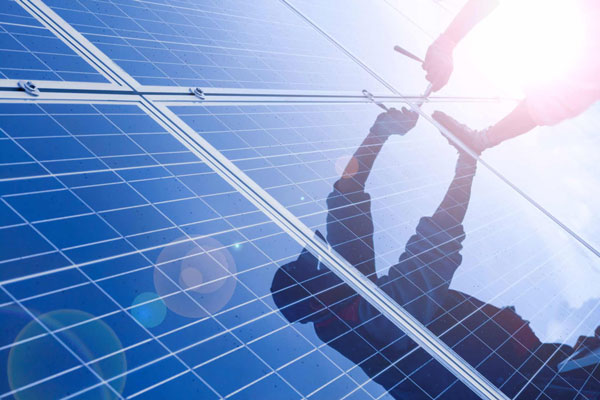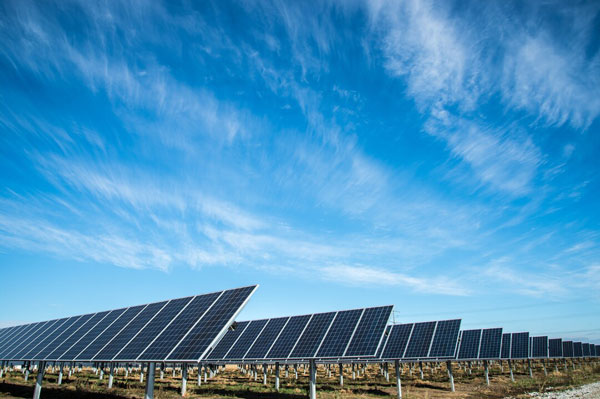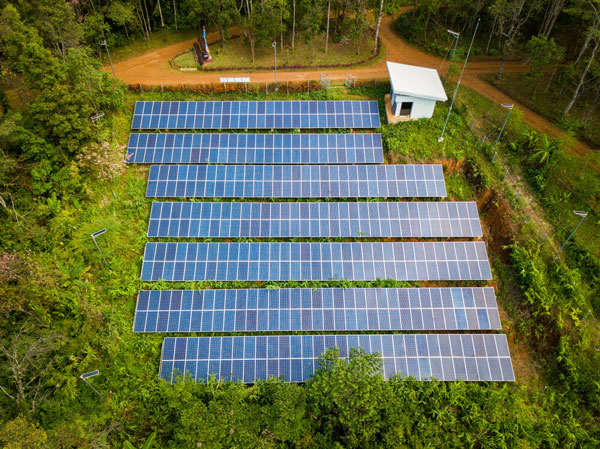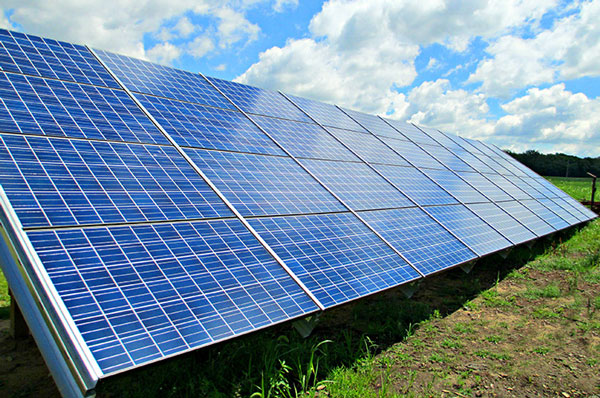Regular cleaning schedule
Cleaning your solar panels on time is crucial to ensure that they can operate at peak efficiency. According to Professor Ucilia Wang, dust, dirt, and even bird droppings can decrease production by up to 20%. As a result, at least two cleanings should be performed annually. There are many benefits of this approach and it’s important to know how and when it is better to clean solar panels.
Optimal time for performing cleaning
The cleaning should be performed in the cooler parts of the day to reduce the likelihood of cracks and thermal shock. Early mornings or late afternoons are therefore optimal. One should always avoid cleaning the panels with full sunlight falling on them since a burn or an immediate shock is also a possibility.
Tools and materials required
One will need a soft brush, a squeegee, and a soap and water mixture or, preferable, an eco-friendly solution of 70% water and 30% white vinegar. One should make sure that the brush has soft bristles and a hose with spraying function will also be useful. If one does not have a squeegee, a wet cloth can be used.
The cleaning process itself
The process of cleaning per se is very simple and consists of several steps:
-
Turn off the solar system to ensure safety.
-
Rinse the panels with water to remove the debris and dust that comes off easily.
-
Use the brush to scrub the soapy water into the panels making sure that no streaks were left. Search for the positive results of cleaning “how to:clean solar panels”].
-
Rinse with clean water and use the squeegee or a wet cloth to prevent the water spots from forming.
Frequency of cleaning and impact of weather
One should change or adapt their frequency of cleaning based on the local weather. Dusty or pollen-heavy areas will require quarterly cleanings. After a heavy rain or a windstorm, one should also check their panels for any debris from the adjacent or the nearby area. In winter, even if snow covers the panels, they can be cleaned if the snow is gently moves with a soft brush or a wet cloth.

Check for physical damage
Examining your solar panels for physical damage is essential to maintaining the efficiency and durability of such energy sources. It also helps in recognizing damages ahead of time and preventing small issues from becoming big significant affairs. In general, experts recommend examining your panels at least twice a year or after any severe weather.
Types of damage
During your inspection, you need to check the glass for any physical damage, such as cracks and chips. Inspecting your panel will help you detect loose connections, corroded wiring, as well as water damage. Severe hailstorms and falling debris can provide severe damage to solar panels, thereby significantly reducing their capacity of generating energy effectively.
Tools and techniques for inspection
When you examine your solar panel, you will need a flashlight to detect light reflection or tiny, deep garden cracks. A magnifier might also help you take a well-closer look. To examine the electrical connections, utilize a multimeter. However, make sure you inspect your panels only during the day and only when they are not generating electricity.
Inspection process
- Try to examine the exterior part of the panels for obvious damages.
- Inspect the mounting hardware by making sure no bolts are too tight, and no screws are too loose.
- Examine the wires and connections for traces of corrosion.
- Check the electrical connections with the help of a multimeter to make sure they are in the voltage range they are supposed to be.
- Look for traces of water damage, such as discoloration or warping around the panels ‘ edges.
- Make sure there are no dirt or flowers surrounding the panels that might cause damage in time.
Impact of damage on the efficiency of the solar panel
Physical damage causes poor efficiency of solar panels, influencing their performance in significant ways. For example, cracks and chips allow water to get inside the glass and provide further damage. More importantly, all loose or corroded connections also result in power loss as well as dangerous fires and arcs. Overall, regular examination helps you preserve your equipment for an extended number of years.
Professional examination and repair
Although you can conduct some of the examinations yourself, the professionals suggest examining your solar panels at least once a year. It is since trained inspectors also possess special tools and more practice and experience of detecting big and small issues. Still, keep in mind that such service may cost you an adequate sum of money.
Monitor performance and output
You should regularly monitor the performance and output of your solar panels to ensure they function at peak efficiency. Evaluating energy production will help you determine any drops and carry out the required maintenance and repairs. Employ both digital tools and manual control to keep the system at its best.
Monitoring Tools
Ensure that you purchase a high-quality solar monitoring system that gives real-time data on the performance of your panel. Some of the most popular tools include SolarEdge, Enphase Enlighten, and SMA Sunny Portal. You can generally see the daily, weekly, and monthly energy production of your system. Most inverters nowadays can be tracked through your smartphone or a computer interface, as they have the internet and thus come with built-in monitoring.
Key Metrics
When tracking the performance of your solar panels, you need to determine kilowatt-hours produced, the efficiency of your system, and performance ratio. The former normally works at around 90-95%, provided your equipment is good-quality and well-kept. The energy output of your panels may fluctuate, but make sure to check that it does not dip under your estimated production for your system size and local weather over the day.
Analyzing Data
Compare the output data of your system over a period to figure out drops. Some seasonal shifts are, of course, normal, but if you notice a sudden significant drop, it typically means shading, new dirt on your panels or malfunction of your inverter or battery. For this reason, you need to regularly analyze your historical data and plan your maintenance based on the results.
Manual Monitoring
Finally, the steps for manual monitoring would be as follows:
-
Record the daily energy output from your inverter or monitoring system.
-
Check the results against previous months or the same season in the previous years.
-
If you notice a significant drop, check the panels physically.
-
Make sure that the inverter does not display any error code or a warning message.
-
Ensure that there are no new shading obstructions like tree branches or new construction.
Benefits of Regular Monitoring
Monitoring your system regularly will allow you to maintain its high performance, which will result in more net energy production and savings. It will also allow you to avoid possible expensive repairs, as regular monitoring helps detect and eliminate minor issues before they become larger. Finally, you will be able to extend the life of your solar panels and ensure a good return on investment.
Ensure proper ventilation
Solar panels require proper ventilation to maintain their effectiveness and longevity. Flow of air regulates the temperature preventing overheating and ensuring maximum performance. A reduction of air ventilation that should be fed to the solar panels can reduce a plug of a solar panel by 25%. Overall, solar panels become extremely hot particularly during summer creating excess temperatures that more or less reduce the efficiency and life of the solar panels. In this regards, proper ventilation ensures that the high temperatures accumulated do not hinder the performance of the solar panels.
Installation
When installing the solar panels, there should be an allowance of space of not less 4 to 6 inches to sufficient air flow. The spacing serves as an essential component where the warmth that has been generated is vented to the surrounding that helps the temperature to relative be that of the surrounding area.
Maintenance tips
Panels need to be checked at regular times of the days and a checkup to notice whether there are any piles of the leaves that may inhibit the proper ventilation. Additionally, rusting of the screws and the base mount should be checked due to rusting and also to check whether vibration will be rigid to allow ample flow. Attempts to fix a fan either on solar power or a through electricity transmission or replacing the flat panel with the tilted one can be another consideration to the improvement of proper ventilation. It is also good to use an infrared thermometer to monitor the temperature of the solar panels. Notably, when the temperature exceeds 60ᵒc, the ventilation gap should be free from scraps too so prevent a buildup of extra heat.
Upgrades
In situations where temperatures vary such as during winters and summers, there is a need to either replace old with new models of solar panel or adjust the tilting angle. During summer time, ensure that ventilation of the solar panels is done up to the maximum size. In this particular period, vegetation around the area of installation should be cut. During winter seasons, there should be no building snow on the ventilation allow that can limit the effectiveness of the airflow from flowing around. The season should administer a routine check-up to ensure all is manageable.

Update system software
It is important to keep your solar panel system’s software up to date to ensure optimal performance. Software updates improve system efficiency and provide new features. Without updates, any existing bugs are likely to cause issues with your system over time. Solar panel systems, inverters, and monitoring devices rely on software to operate. Regularly updated software will ensure that these components work at their peak efficiency and receive the latest technological improvements. Furthermore, failing to update your software might leave it vulnerable.
how to update
Most of today’s solar inverters and monitoring systems have user-friendly interfaces. Monitoring your system is easy, as all you need to do is log into its monitoring portal or app. This is also where software updates are featured. To ensure you are always informed, verify that your contact information is current and up to date. If your system is ever updated, manufacturers will let you know. Once connected, the steps to update are as follows:
-
Access your system’s monitoring portal via a web browser or mobile app.
-
Find the settings or maintenance section.
-
Check for available software updates.
-
If updates are available, download and install them. The update and installation process may take a few minutes, and you may also need to restart your system.
-
Verify that your system has been updated by checking its version. You can also monitor whether the update had an effect on your system’s performance.
Benefits of regular updates
Regularly updated software ensures that you have access to the latest features and improvements. Updates can improve your energy efficiency by fine-tuning algorithms and fixing known issues. Furthermore, software updates bring security improvements, protecting your system from unwanted access to your data and system control.
Common update issues
Sometimes, your system may run into problems during the update process. If it fails to update after a single try, restart your system and try updating it again. If you still see issues, contact your system provider’s customer service. Always keep backups of your system settings so that you can reapply them if the update causes issues. Finally, check the settings on your system and enable automatic software updates. This way, your system will always be up to date and you will not have to do anything manually.



